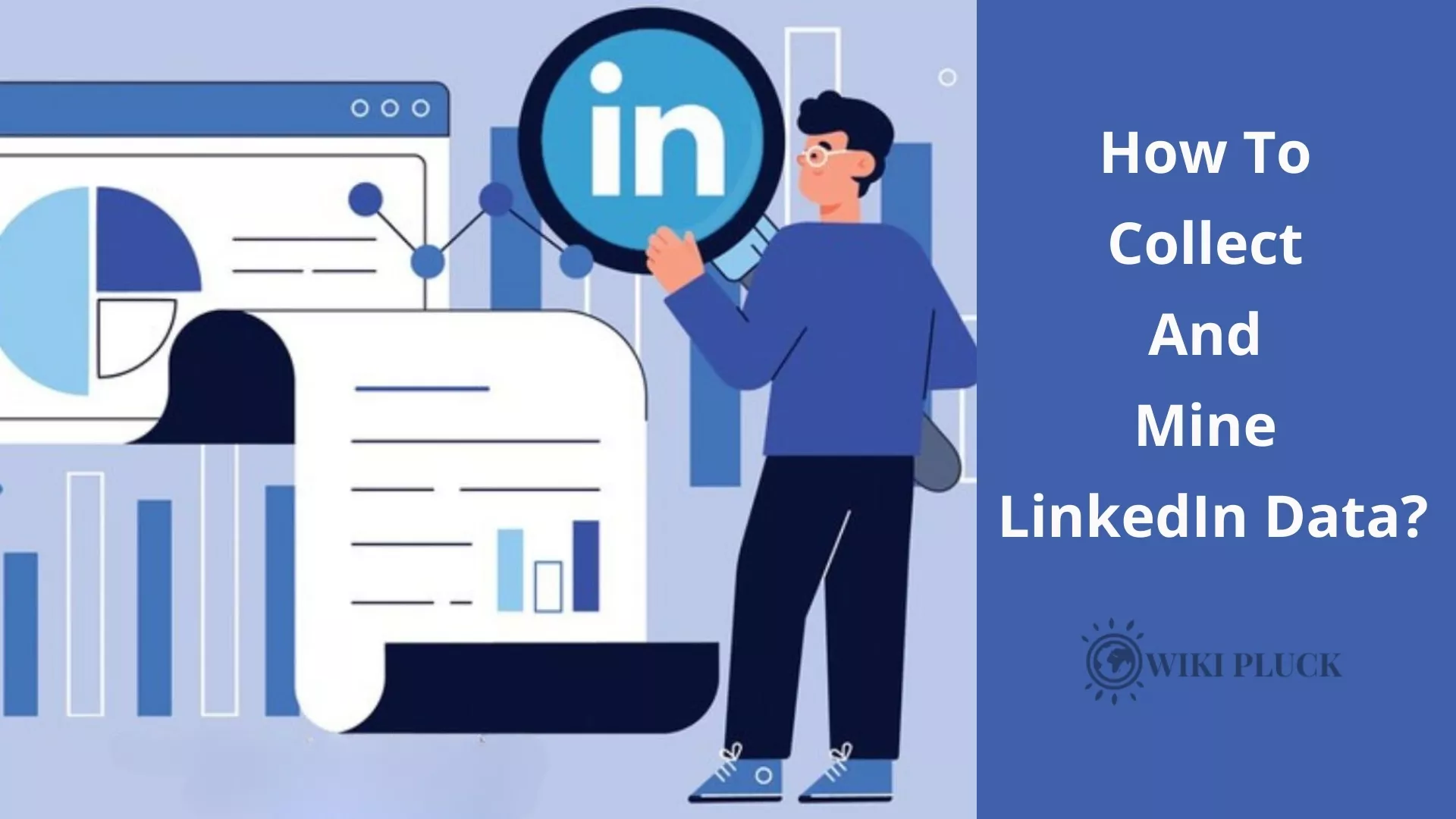Looking to leverage the vast data available on LinkedIn to gain valuable business insights? This article guides you through multiple methods for effectively collecting and mining LinkedIn data. Read on to learn how to gather data that can help you inform strategic decisions, drive growth, and beat the competition.
How to collect and mine LinkedIn data?

Since LinkedIn emerged as the go-to professional networking platform, the potential for leveraging its data for business insights is growing daily.
LinkedIn provides access to a vast repository of information about individuals, companies, industries, and job markets. This data contains valuable insights that can inform strategic decisions, drive growth, and enhance competitiveness.
As a marketer, recruiter, or an entrepreneur, this data helps you:
Identify networking gaps: Analyzing your connections allows you to see which industries or companies are under-represented. This can guide your networking efforts and help you build a more well-rounded network.
Discover collaboration opportunities: Finding connections with complementary skills who could be potential collaborators on projects can lead to new opportunities and career growth.
Unveil industry trends: By analyzing public data on profiles and groups, you can stay ahead of the competition and identify and leverage emerging trends within your field.
Get talent acquisition insights: By analyzing candidate profiles and engagement metrics, you can streamline the recruitment process and efficiently identify top talent.
Enhance brand visibility and thought leadership: Analyzing relevant content and emerging trends on LinkedIn can help craft strategies to boost brand visibility. By sharing valuable content, engaging with industry influencers, and participating in relevant discussions, businesses can build credibility and attract potential clients, partners, and employees.
With such immense possibilities, collecting and mining LinkedIn data as a part of regular business operations is becoming the norm.
If you’re also considering leveraging LinkedIn data to enhance business decision-making, you must first equip yourself with the right tools and techniques. Here are a few ways to begin your LinkedIn data mining journey.
Also Read: 10 Best Lead Generation Tools & Software in 2023
Manual data collection practices
This includes searching for LinkedIn profiles using specific keywords. You can review those profiles to gather insights about professionals, including their skills, experiences, education, and connections. Analyze profile descriptions, endorsements, and recommendations to assess expertise and credibility.
You can also collect and mine data through company pages on LinkedIn to gather information about organizations, including their size, industry, location, and recent updates. Analyze company descriptions, employee demographics, and follower engagement to understand market positioning and brand reputation.
You can also directly download the data of your connections and export it to a CSV file for analysis. In your LinkedIn account, head to ‘Settings & Privacy’ > ‘Get a copy of your data’ and select ‘Connections.’
This provides a CSV file containing names, titles, and contact information (if publicly available). The downloaded data can be imported into spreadsheet software like Microsoft Excel or Google Sheets to extract valuable insights.
LinkedIn Premium subscription
You can upgrade your account and avail LinkedIn Premium subscription to aid data mining efforts. It provides ‘advanced search filters’ to search for users with specific skills, experience levels, companies, and locations. This allows you to refine your searches and identify highly relevant profiles.
‘InMail credits’ lets you send messages directly to anyone on LinkedIn, even if you’re not a connection. With a premium subscription, you get a set of InMail credits each month, enabling targeted outreach to build your data pool.
Premium provides more comprehensive ‘people you may know’ suggestions. These suggestions are often based on your network and search history, potentially revealing valuable connections you might have missed otherwise. You can also get advanced ‘profile viewing insights’ with a premium subscription.
This can give you clues about which professionals might be interested in your offerings and become potential collaborators for professional growth.
LinkedIn Sales Navigator
LinkedIn Sales Navigator offers a more targeted approach to gathering sales-oriented information. It features more advanced search filters than the Premium subscription model.
You can target prospects based on very specific criteria like company size, recent funding rounds, or even engagement with specific content types. This allows you to find highly relevant leads that might be hidden from basic searches.
Sales Navigator also assigns a score to potential leads based on their fit with your ideal customer profile (ICP) and their overall online activity. This score helps you prioritize outreach efforts and target the most promising leads for data collection.
You can save a high number of leads and set up alerts to be notified of any changes in their profile, like a job title update or a new company announcement. This allows you to stay updated on your target audience and collect and mine valuable data points over time.
Also Read: Why SEO Marketing is Important For Your Online Business?
Professional LinkedIn data mining services
Third-party LinkedIn data mining service providers serve as the most efficient way to uncover valuable data for your needs in a cost and time effective manner. Such companies, with subject matter experts and experienced teams, can perform advanced keyword research to collect and mine data from targeted profiles.
Service providers focus on your target audience’s precise skill sets, recent company activities, or engagement with industry-specific content. This laser focus helps you connect with the professionals you need, maximizing the quality of your prospect data pool.
Manually sifting through numerous profiles or the collected data to discover patterns or trends is also a very time-consuming task; teaming up with a service provider streamlines this process.
They combine expert human analysis with sophisticated automation to gather data efficiently. They also implement stringent control measures to ensure the accuracy and completeness of the extracted information, providing you with highly reliable data for further analysis.
Service providers can also support you in the analysis by handling pattern recognition or data visualization.
Moreover, as such experts are familiar with the complexities of LinkedIn’s search algorithms, compliance regulations, and ethical practices, their services ensure that you collect and mine LinkedIn data ethically while avoiding potential pitfalls.
On a concluding note
From leveraging LinkedIn’s built-in features to outsourcing LinkedIn data mining services, we have covered all the best approaches to help you aid in data collection and mining.
Ultimately, the best approach depends on your specific needs and resources. If you require a targeted dataset for a one-time project, advanced search filters and InMail outreach on LinkedIn Premium might suffice.
However, for large-scale, ongoing data collection, partnering with a reputable third-party service can be a strategic investment. They offer expertise, efficiency, and customized solutions to ensure you gather high-quality data which is paramount for professional growth.
FAQs
What method should I choose for collecting and mining LinkedIn data?
Your data needs and knowledge of specific data collection and mining techniques will determine which method to employ. For instance, if you are looking for sales-specific information, LinkedIn Sales Navigator would be a good option.
What are LinkedIn’s terms of service regarding data mining?
LinkedIn user agreement expressly forbids the use of third-party software, including web crawlers, bots, browser plugins, and add-ons to scrape, modify the appearance of, or automate activity on LinkedIn’s website. Actions that do not amount to any of these, such as using its API to retrieve data, are allowed.
Is there a limit to the amount of data I can collect from LinkedIn?
Yes, LinkedIn imposes restrictions on the amount of data collected to prevent misuse and ensure a positive user experience. For instance, the LinkedIn API has usage limits, and excessive scraping activities may trigger security measures or account suspension.
How often should I update my collected LinkedIn data?
Regular data updates are essential to maintain accuracy and relevance, especially when collected from sources like LinkedIn, where profiles are frequently updated. Establishing a schedule for data updates or enrichment ensures that your analyses reflect the latest information available.
How do I ensure the accuracy and quality of the collected LinkedIn data?
It is essential to employ rigorous quality control measures to ensure the accuracy and completeness of the collected data. This may include verifying data sources, cross-referencing information, and implementing data validation techniques. Additionally, you can outsource data cleansing or data enrichment services as well.

Ella Wilson is a Sr. Business Consultant and Content Strategist at SunTec India, a leading multi-process IT outsourcing company. She has been associated with the company for more than six years and holds an overall experience of ten years in the industry. Wilson is keen on helping businesses make the most out of their data assets and improve their business processes.
She has vast experience writing about data entry, processing, management, and other solutions. As an avid reader and technology enthusiast, Ella pens down her thoughts, incorporating all her experience and knowledge to help budding enterprises solve their challenges and pave their path to success.
Besides writing about data solutions, she is also passionate about writing articles revolving around technology, eCommerce, digital publishing, digital marketing, and more.
